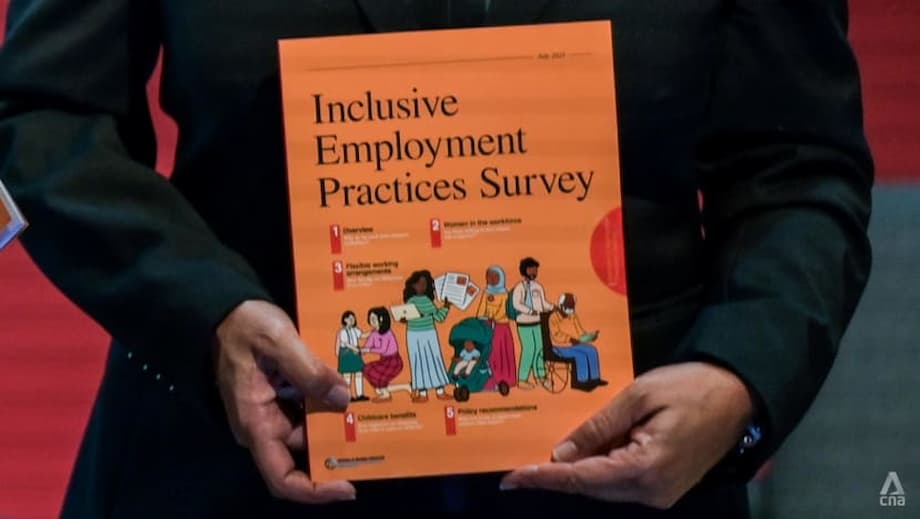Malaysian Women and the Workforce: A Persistent Gender Gap
Malaysia stands at a crossroads in its journey toward economic development and gender equality. Despite notable progress in education and policy reforms, women in Malaysia continue to face significant barriers to entering and remaining in the workforce. A recent World Bank study surveying 1,500 Malaysian firms has brought these challenges into sharp focus, highlighting the complex interplay of familial commitments, workplace regulations, and societal norms that hinder women’s economic participation.
The study found that 58 percent of employers view women’s family commitments as a major recruitment challenge, while 54 percent cite maternity leave as a barrier. These figures underscore a persistent gender gap in labor force participation: in 2024, only 56.6 percent of Malaysian women were active in the labor market, compared to 83.4 percent of men. This gap is not just a matter of equity—it has profound economic implications for the nation.
Why Do Women Leave the Workforce?
One of the most striking findings from the World Bank’s research is the age-related decline in female workforce participation. Women aged 21 to 30 make up 41 percent of female employees, but this drops to 32 percent for ages 31 to 40, 17 percent for 41 to 50, and just 10 percent for those over 50. The reasons are deeply rooted in Malaysia’s social fabric and workplace structures.
Family responsibilities, especially childcare and eldercare, are the most commonly cited reasons for women leaving or not entering the workforce. In interviews conducted by the World Bank, women from various backgrounds echoed a similar refrain: the lack of affordable, trustworthy childcare makes it nearly impossible to balance work and family. As one participant in a World Bank focus group put it,
“We feel we can do better. It’s hard with the children—we have to make sure they’re taken care of while we’re at work.”
This sentiment is not limited to low-income families. Middle-class and highly educated women also face the double burden of caring for children and elderly relatives, often leading them to quit their jobs or seek flexible, part-time work. The absence of accessible childcare options compels many women to stay home or work informally, where earnings and social protections are lower.
The Role of Workplace Policies
While over half of surveyed firms have implemented measures such as flexible work arrangements, onsite childcare, and paid parental leave, these supports are unevenly distributed. Larger companies are more likely to offer family-friendly policies, while smaller firms struggle with the costs and logistics of such initiatives. Even when policies exist, their effectiveness depends on workplace culture and the level of trust between employers and employees.
Experts emphasize that family-friendly policies should be seen as investments that enhance productivity and company branding. However, many employers remain hesitant, fearing that flexibility will lead to decreased efficiency or increased costs.
Economic and Social Costs of the Gender Gap
The underrepresentation of women in Malaysia’s workforce is not just a social issue—it is a significant economic challenge. The World Bank estimates that if Malaysia could raise female labor force participation to the levels seen in advanced economies, the country’s income per capita could grow by 26.2 percent. This would translate to an average annual income gain of RM 9,400 (about US$2,250) for each Malaysian.
Despite women being, on average, better educated than men—more than 50 percent of women are graduates across all types of degrees and institutions—this educational advantage does not translate into equal economic opportunities. Women’s average earnings remain significantly lower than men’s across almost all occupational and educational groups, especially among those without formal education.
Sectoral Disparities
Women are overrepresented in sectors traditionally seen as “female,” such as education, health, and household work, but are underrepresented in higher-paying fields like construction, manufacturing, and technology. Legal and systemic barriers have historically limited women’s access to certain jobs, though recent reforms have begun to address these issues. For example, Malaysia recently removed bans on women working night shifts in industrial settings, opening up new opportunities in sectors previously closed to them.
Comparing Malaysia: Regional and Global Perspectives
Malaysia’s female labor force participation rate, while improved from 46.8 percent in 2010 to 56.6 percent in 2024, still lags behind regional peers such as Thailand, Vietnam, and Singapore. In South Asia, only 32 percent of working-age women are in the workforce compared to 77 percent of men, highlighting a broader regional challenge. Globally, countries like Egypt face similar issues, with female participation rates as low as 18 percent, but the potential economic gains from closing the gender gap are even more dramatic—up to 56 percent increase in GDP.
Internationally, comprehensive approaches that combine education, legal reform, social protection, and private sector engagement have proven most effective in closing gender gaps. For instance, Egypt’s National Strategy for the Empowerment of Women 2030 includes leadership training, legal reforms, and targeted support for female entrepreneurs. In South Asia, World Bank-supported initiatives have improved women’s access to safe transportation and childcare, enabling more women to join and remain in the workforce.
Lessons from Other Countries
Countries that have successfully increased female labor force participation often invest heavily in care infrastructure, enforce anti-discrimination laws, and promote flexible work arrangements. For example, Bangladesh’s investment in childcare facilities and India’s gender-inclusive transportation projects have enabled more women to balance work and family responsibilities. These examples demonstrate that policy interventions must be multifaceted and sustained over time to be effective.
Policy Responses and the Path Forward
The Malaysian government has recognized the urgency of addressing the gender gap in the workforce. Recent policy measures include allocating funds for childcare in the national budget, introducing incentives for women returning to work, and revising labor laws to improve maternity leave and protections against discrimination and harassment. An interministerial working group, with the World Bank as a technical advisor, is working to expand childcare provision and align parental support with international norms.
However, challenges remain. The implementation and enforcement of these policies are uneven, and cultural attitudes about gender roles continue to influence both employer practices and women’s own career decisions. The World Bank and local experts recommend a comprehensive policy approach that includes:
- Expanding the availability, quality, and affordability of childcare and eldercare services
- Strengthening protections and productivity for informal workers
- Pursuing legal reforms to ensure equal rights for women and men in the workplace
- Improving support for working parents through paid paternity leave and increased maternity leave
- Addressing gender norms through education and public awareness campaigns
Existing initiatives such as TalentCorp’s Career Comeback Program, which supports women re-entering the workforce, could be refined to better match the skills and experience levels of returnees. Flexible Work Arrangement Guidelines could also be enhanced to address productivity concerns and ensure that both employers and employees benefit from greater flexibility.
The Importance of Data and Accountability
Effective policy requires accurate, sex-disaggregated data on employment by sector and occupation. The World Bank’s Women, Business, and the Law report highlights the need for better measurement, legal reform, and international cooperation to ensure that commitments to gender equality are upheld. Only with robust data can policymakers identify gaps, monitor progress, and hold institutions accountable for advancing women’s economic rights.
Changing Mindsets: The Cultural Challenge
Perhaps the most difficult barrier to overcome is the deeply ingrained belief that caregiving is primarily a woman’s responsibility. In Malaysia, as in much of South Asia, traditional gender norms continue to shape expectations about women’s roles in the family and the workplace. Over 60 percent of women not in the labor force cite housework, including child and elder care, as the main reason for not seeking employment, compared to less than 4 percent of men.
Changing these attitudes requires sustained efforts in education, media, and community engagement. Public awareness campaigns, school curricula that promote gender equality, and visible role models can help shift perceptions and encourage both men and women to share caregiving responsibilities more equitably.
In Summary
- Malaysia’s female labor force participation rate remains significantly lower than that of men, despite women’s higher educational attainment.
- Family commitments, lack of affordable childcare, and workplace regulations are major barriers to women’s employment.
- The economic cost of the gender gap is substantial—closing it could boost Malaysia’s income per capita by over 26 percent.
- Policy reforms, investment in care infrastructure, and cultural change are all needed to support women’s participation in the workforce.
- International examples show that comprehensive, sustained interventions can make a difference, but progress requires commitment from government, employers, and society as a whole.




